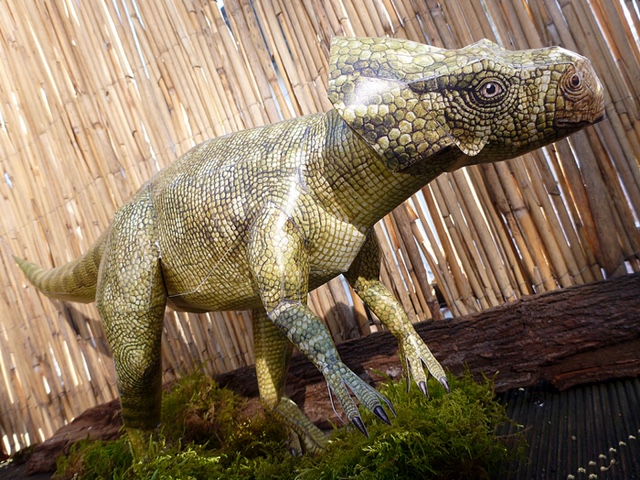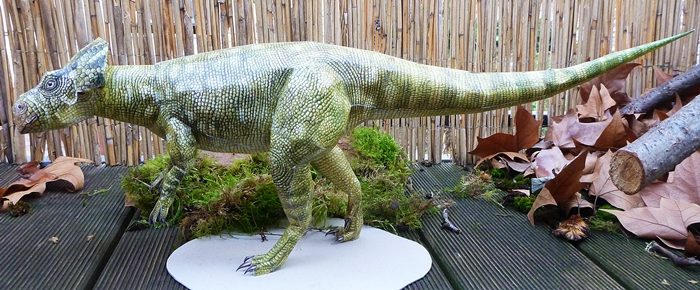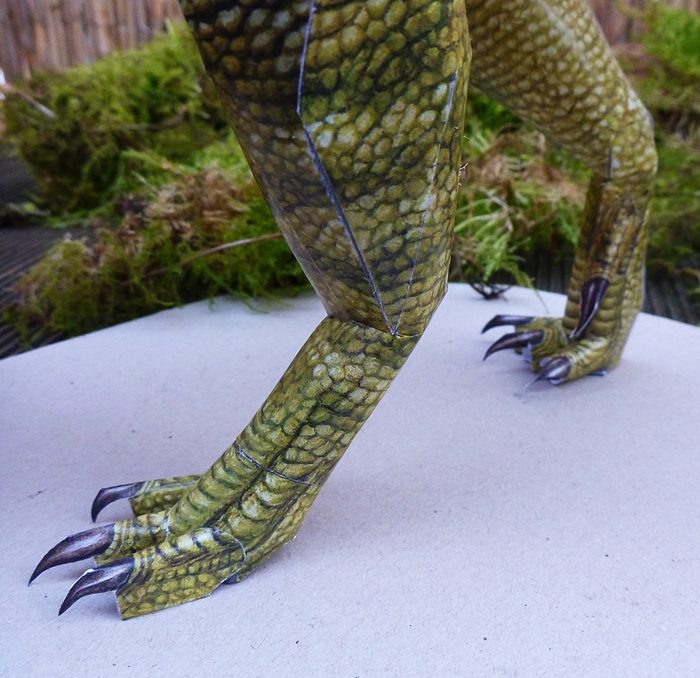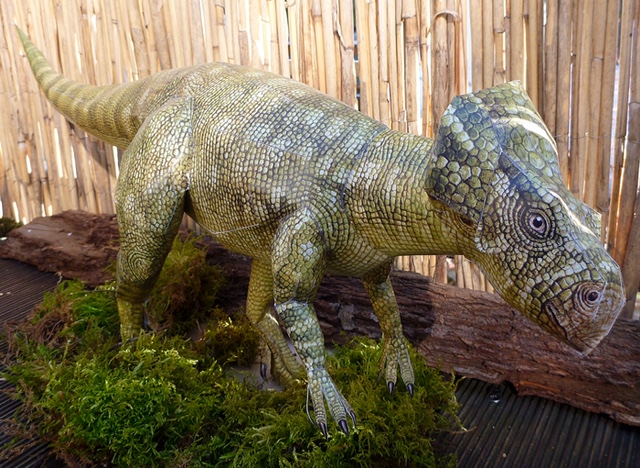Review and photos by Lanthanotus, edited by Suspsy
It’s been a while since I promised you another review of a papercraft model, but here it is, Johan Scherft’s interpretation of Microceratops. Now, if you wonder why this name isn’t italicised here or why Google redirects you to a species of parasitic wasp rather than to a ceratopsian dinosaur the explanation is, that Microceratops is in fact an insect species and because of this, the few small parts of a ceratopsian dinosaur fossil found in Mongolia and decribed 1953 by Bohlin were renamed Microceratus by Mateus in 2008. However, some scientists regard Microceratus as a nomen dubuim because most of the fossil material was reassigned to Graciliceratops, a small species that belonged to the Protoceratopsidae and dwelled in Mongolia some 86 to 72 million years ago. So for the sake of this review, let’s just say that we’re talking about a small and early ceratopsian, and for this, the model presented here convinces.

Johan Scherft is a Dutch artist who specializes in painting and papercraft sculpting. Most of his papercraft models are modern birds and appear from a small distance more as real, stuffed animals than papercraft models. This convincing appearance also goes for his Microceratops, though some may say it lacks those spots of fluffy fibre now frequently seen on reconstructions and models of other members of the ceratopsian family. Scherft’s Microceratops is scaly from top to bottom, but the scales differ from each other depending on their location on the body, as they would in a real animal. The belly and underside are decked in light green squares and apparently overlapping scales while the upper body boasts mostly polygonal scales that lay against each other. The scales on the frill are largest. The colourization of dark green with light spots is comparably drab, but well believable for a small dinosaur with an presumably great array of predators. The model stands a proud 19 cm tall and measures 60 cm in length, making it one of the largest ceratopsian models available. The head of the model can be tilted to allow for several expressions of the animal.

In terms of accuracy, the model is probably quite well done when one considers the fragmentary remains that would be counted towards Microceratus/Graciliceratops. All major features are present. The beak and the frill are well-formed, the legs are strong and long as they should be, and the feet seems to have the right number of toes, inculding the dew claw. The hands, however, are probably somewhat inaccurate, as they each have five well-developed fingers. To be fair, the characteristics of Graciliceratops in this matter are unknown, and better known and bipedal relatives as Psittacosaurus are reconstructed with three to five fingers (of varying length), though the most recent and accurate reconstruction of the species shows three well-developed fingers and one small, underdeveloped one.

Being a papercraft model, the choice of paper and the skills of the assembler will have great influence on the overall appearance and display value of the model. However, with a bit of patience and a steady hand, the assembly can easily be done by the unexperienced and is well worth it. The final result requires a stand as it’s posed in a gracile, bipedal stance that most likely won’t be able to sustain itself (mine at least could not, but depending on slight variations in the assembly, some models may be able).

The model is available as a PDF for a price of 5 € on Johan Scherft’s website.

Disclaimer: links to Ebay and Amazon on the DinoToyBlog are affiliate links, so we make a small commission if you use them. Thanks for supporting us!




That is so neat!
Johan Scherft just released two non avian dinosaur models so far unfortunately, this and the hatching Deinoychus.
Got more Papercraft models to review, but not as detailed ones though…
This thing is cool! How many different ones are there?